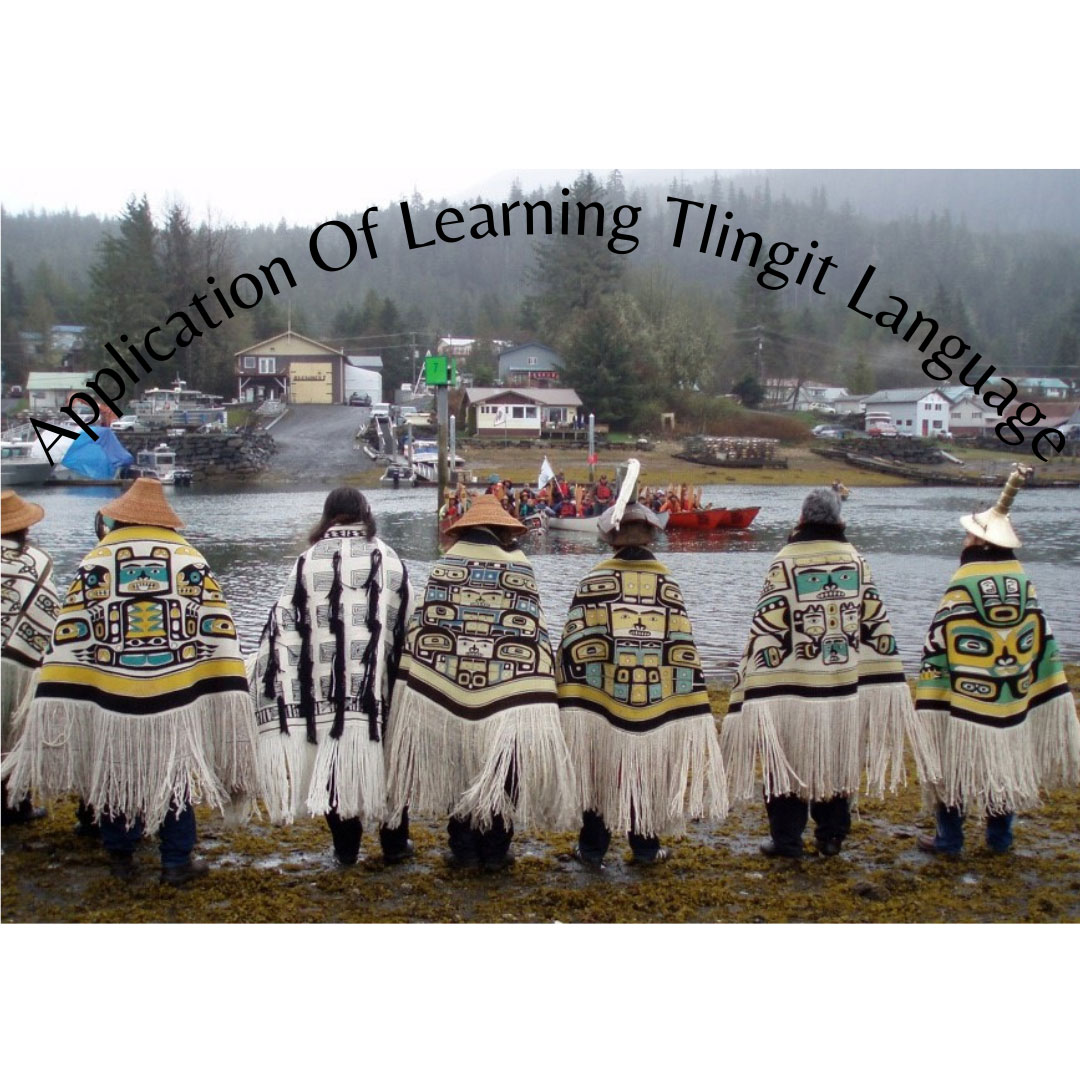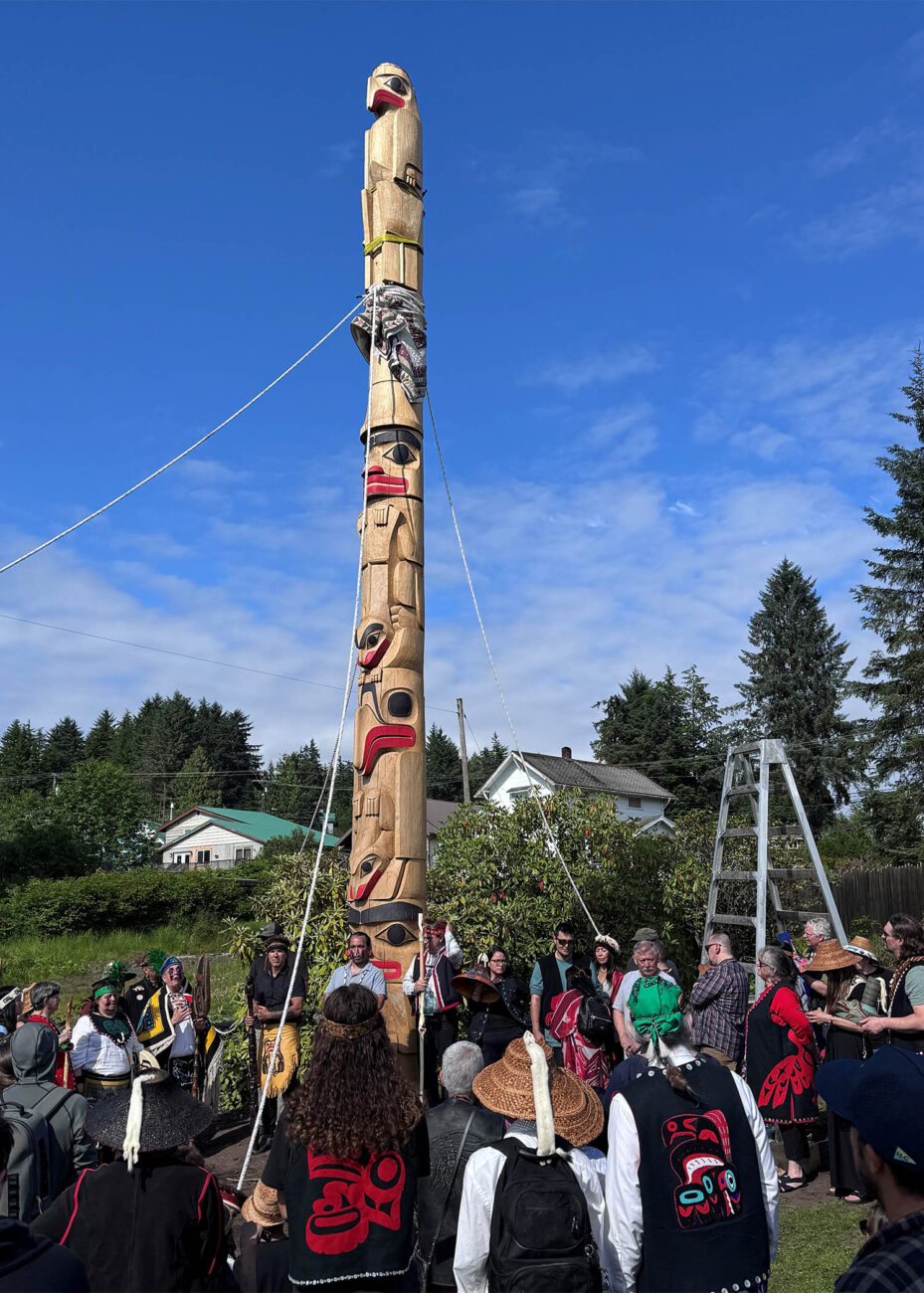
Voices chatter and drums beat while hundreds of people gathered in a drive through lot next to a tribal carving shed in Wrangell on a warm, clear July day. Their eyes watched about 50 people crouched down to wooden beams on the ground, beneath a two-ton red cedar totem pole. The lead carver of this new pole instructs those standing next to the beams.
“On three, up slow. One, two, three,” TJ Sgwaayaans Young called out to the group. The surrounding crowd cheered excitedly, acknowledging that the totem is more than carved cedar. It represents healing – of land, language and people.
Today’s day three of Wrangell’s totem pole raising event. The community waited nearly four decades since the last one was erected. That was in 1987.
Carving these poles has been in the works since 2011.
That’s when the local tribal government, Wrangell Cooperative Association started planning the totem restoration project. It’s the third part of a three part project for cultural revitalization in the area.
The first was restoring Chief Shakes House and the second was building the cultural center that’s also the carving shed.
Hundreds of people gather
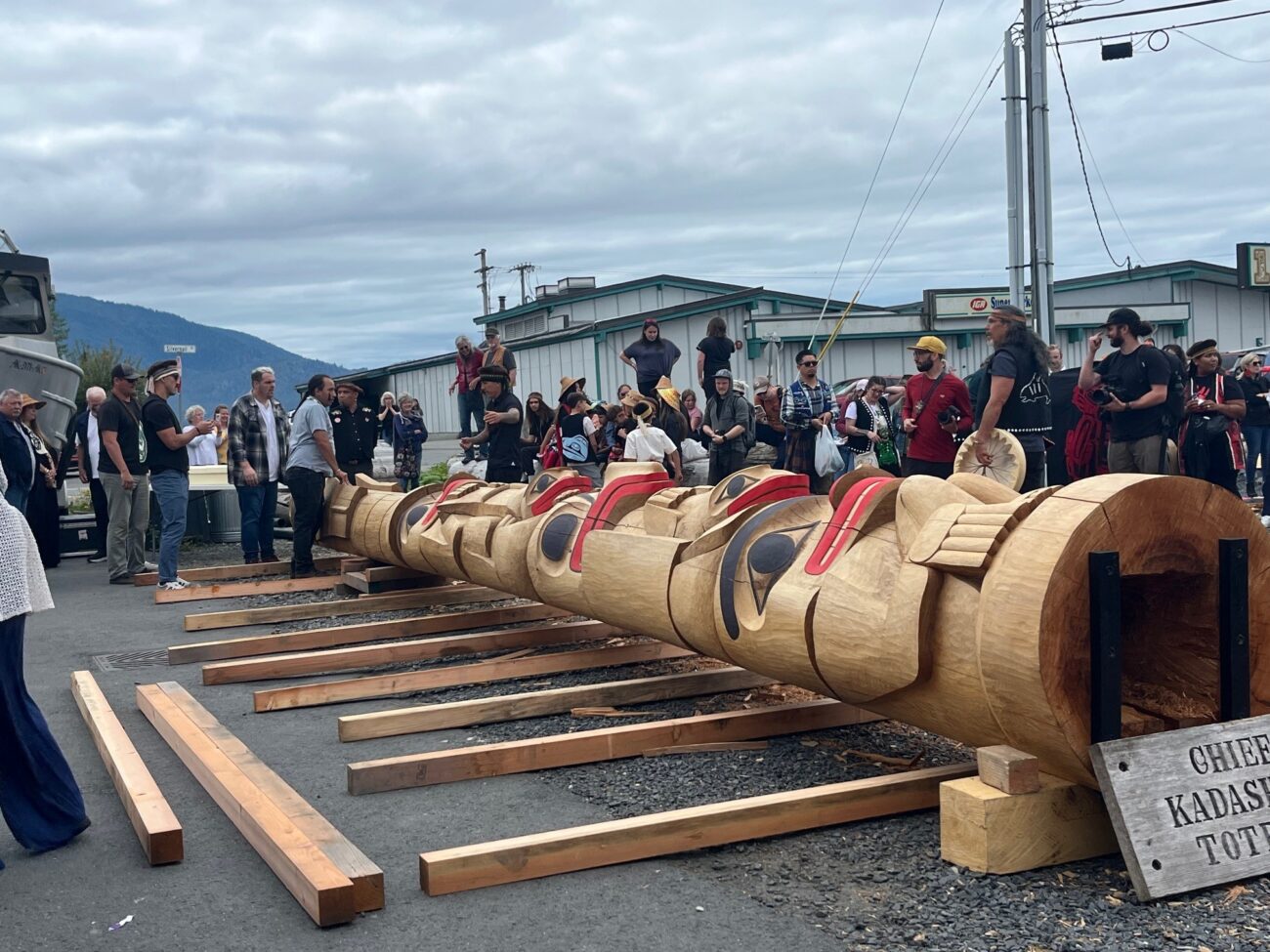
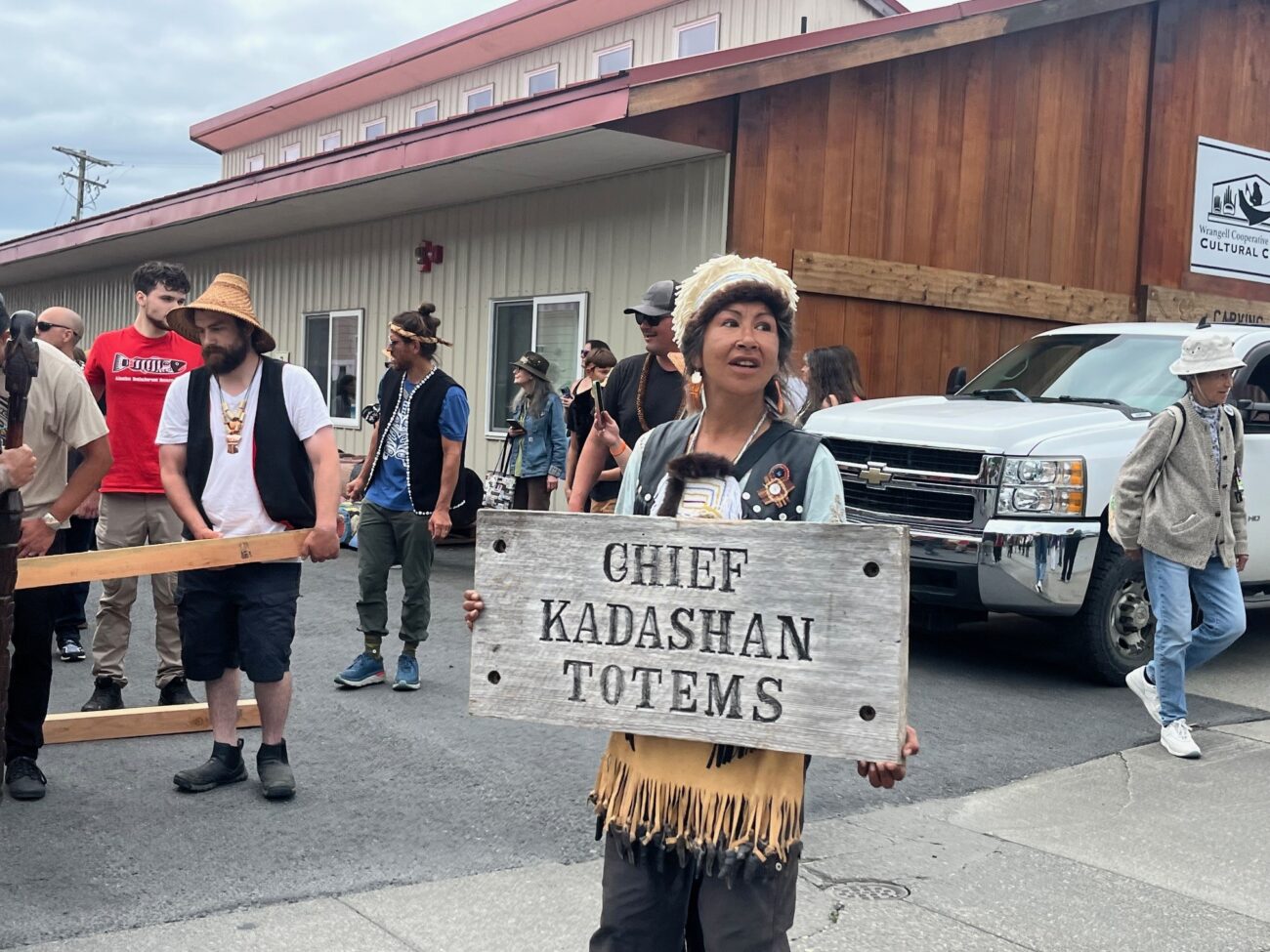
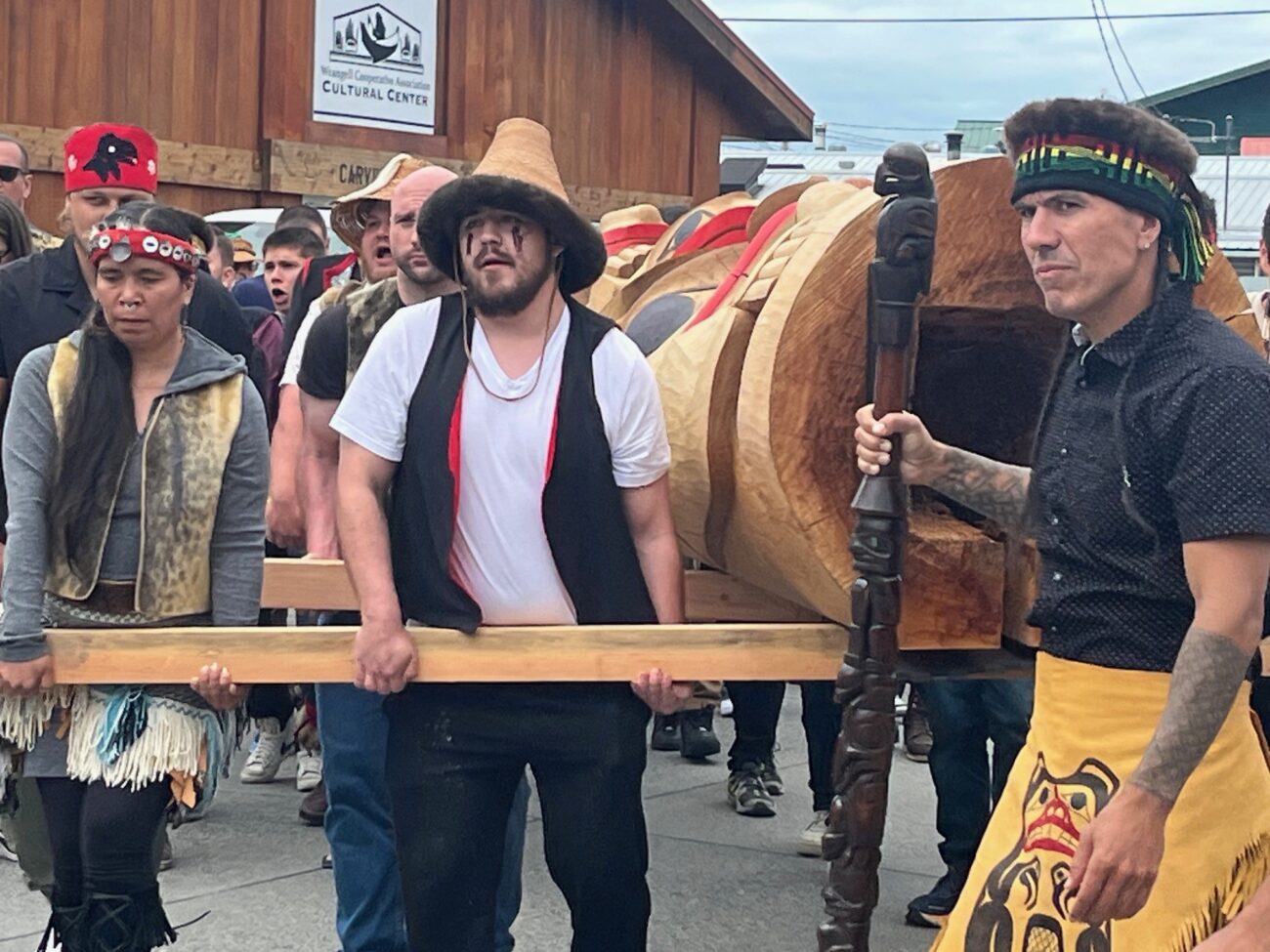
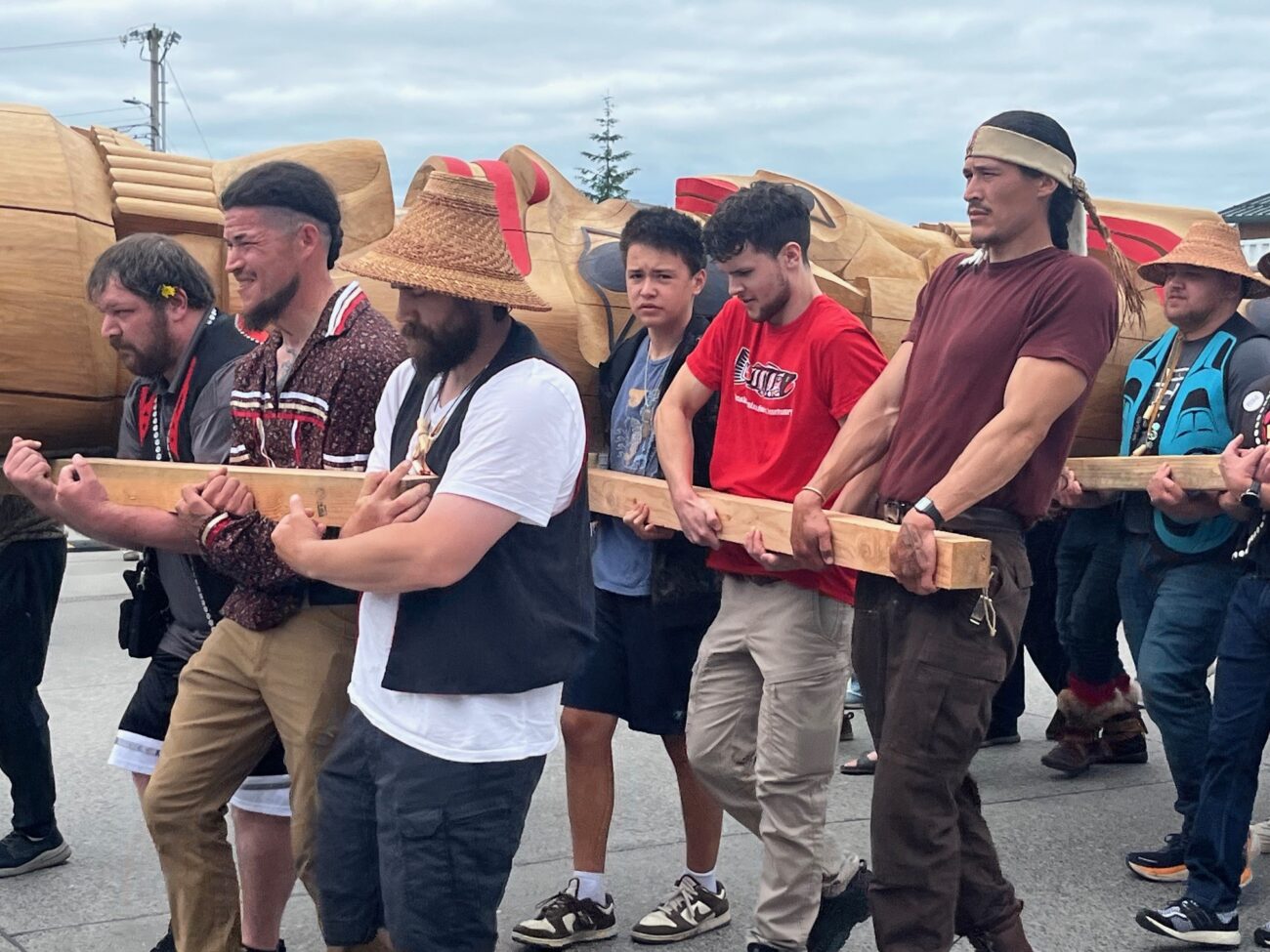
More than a decade later, about 300 people walked a few blocks down Front Street, from the carving shed to Totem Park.
Some walking next to those lifting the totem checked in with them, asking if anyone needs a break, while others sang and beat their drums.
During one of the few breaks, George Nix said carrying the totem with everyone else is inspiring. He lives in Kasaan and paddled a canoe 50 miles from Prince of Wales Island for the event.
“It’s like reconnecting. It’s a loud statement to our culture, not only being a surviving thing, but a thriving thing,” he said. “So we’re here, living it still, practicing it still, and carrying it down the street and singing loud and proud. It’s a pretty inspirational feeling.”
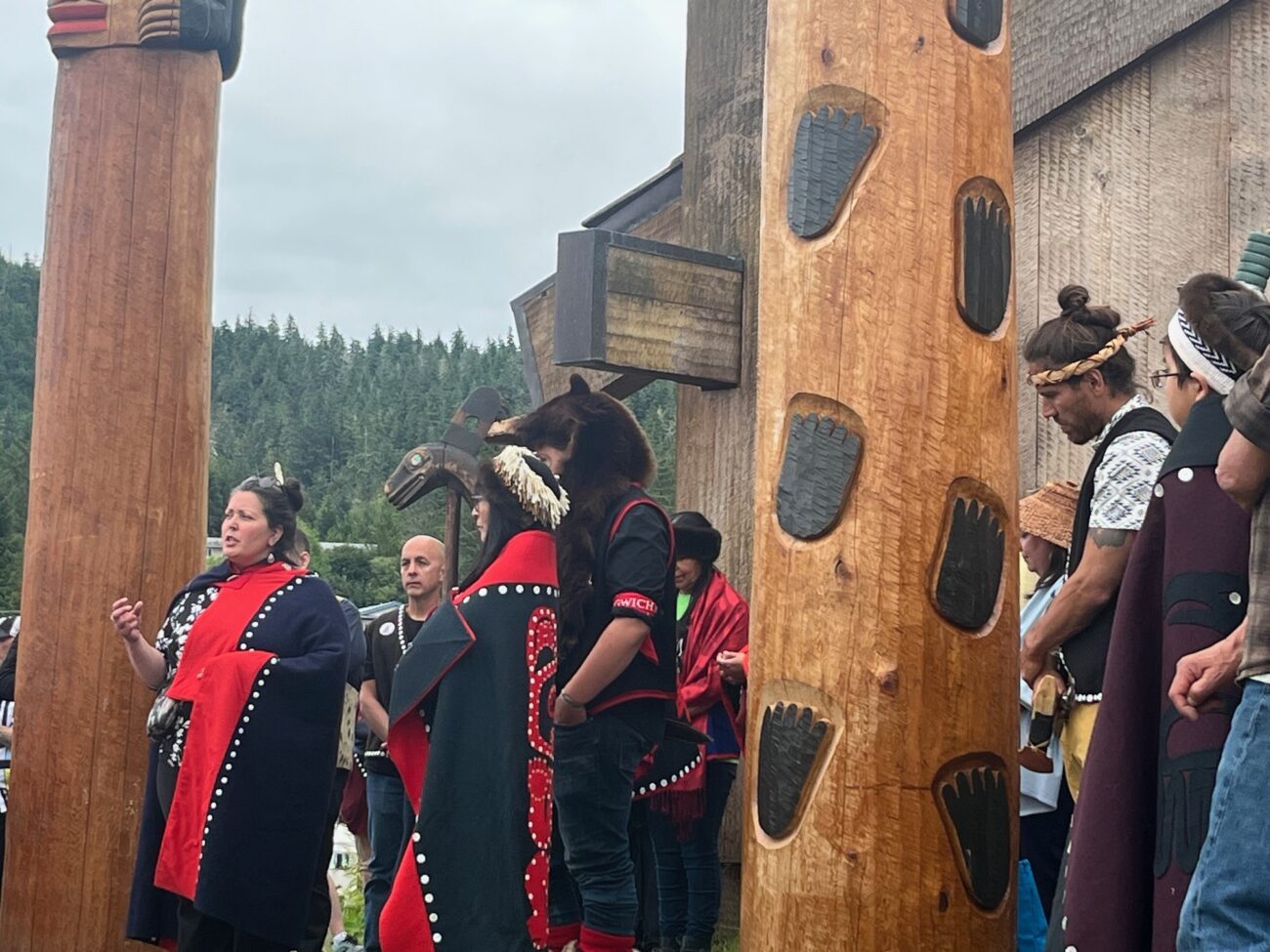
Last year, the local tribe brought in master carvers to mentor apprentices in carving five poles. Each one took months to complete. The poles are a living record of the Tlingit, Haida and Tsimshian people. Four were erected earlier the week of July 13 with heavy machinery but one was left to carry the traditional way.
“it took every last one of us – man, woman and child – to erect it”
One of the master carvers is TJ Sgwaayaans Young, originally from Hydaburg. He was the lead carver of the Kadashan totem and leads the procession. He made sure the pole was equally balanced on the beams while the people carried it. Some who walked along rejoiced by howling with the song and drumming.
We finally arrived at the park with the totem, joining the four other totems that have been there for decades.
After attaching very long ropes to the upper section of the new pole, people of all ages lined up along the rope that’s behind the totem. Young counted down for the raising to begin. While they pulled, others pushed the front upward.
Many of them yelled push and pull. As they raised it, the totem creaked loudly against the vertical metal support beam.
It’s a collective effort of pushing and pulling to make it stand tall into the cloudless blue sky.
Young said he feels relieved. He said that it could be the heaviest totem pole he’s ever helped raise by hand.
“I’ve seen people do pulls like this. When they raised it, they used heavy equipment,” he said. “We wanted to use manpower and it took every last one of us – man, woman and child – to erect it.”
“I was telling the totem pole what was happening”
Aak’wtaatseen Mike Hoyt, one of the apprentices and WCA’s totem pole project manager, said it’s difficult to express how he feels about the raising.
“I was telling the totem pole what was happening and that it was going to stand and be part of history and part of telling our history,” he said. “I could feel it as it was falling into place. For me, that was why we do all the things that we had done,”
Meda Ja’nutla’a DeWitt was also there to honor her culture. She lives in Anchorage but is Naanyaa.aayí from Shtax’héen kwaan, here in Wrangell.
“This really is healing, and it’s supposed to be a space where we come together and unify and support each other and hold each other up and be amicable, because we’re here for our ancestors,” she said. “Those totem poles have been with our people for hundreds and hundreds, if not thousands of years.”
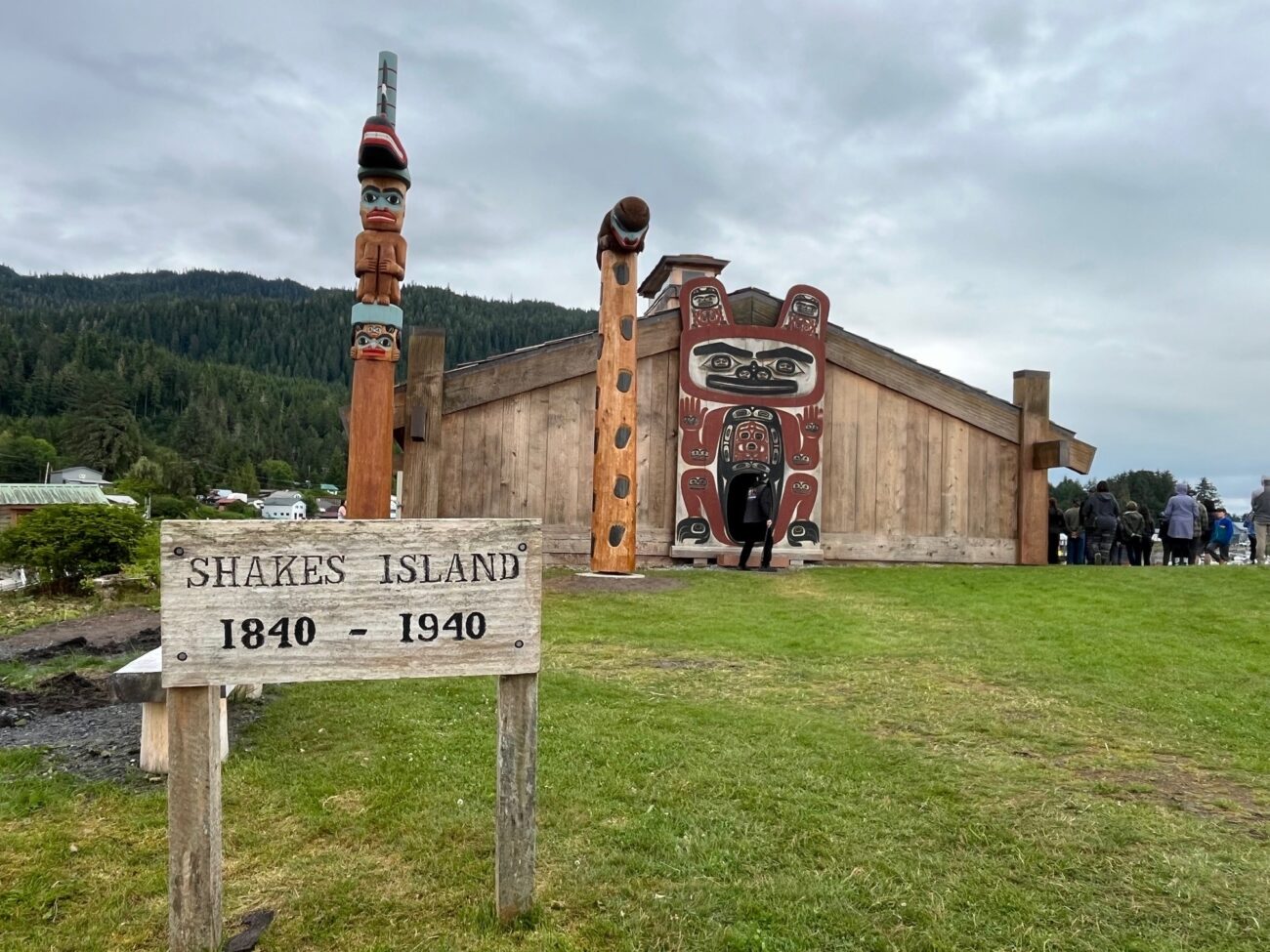
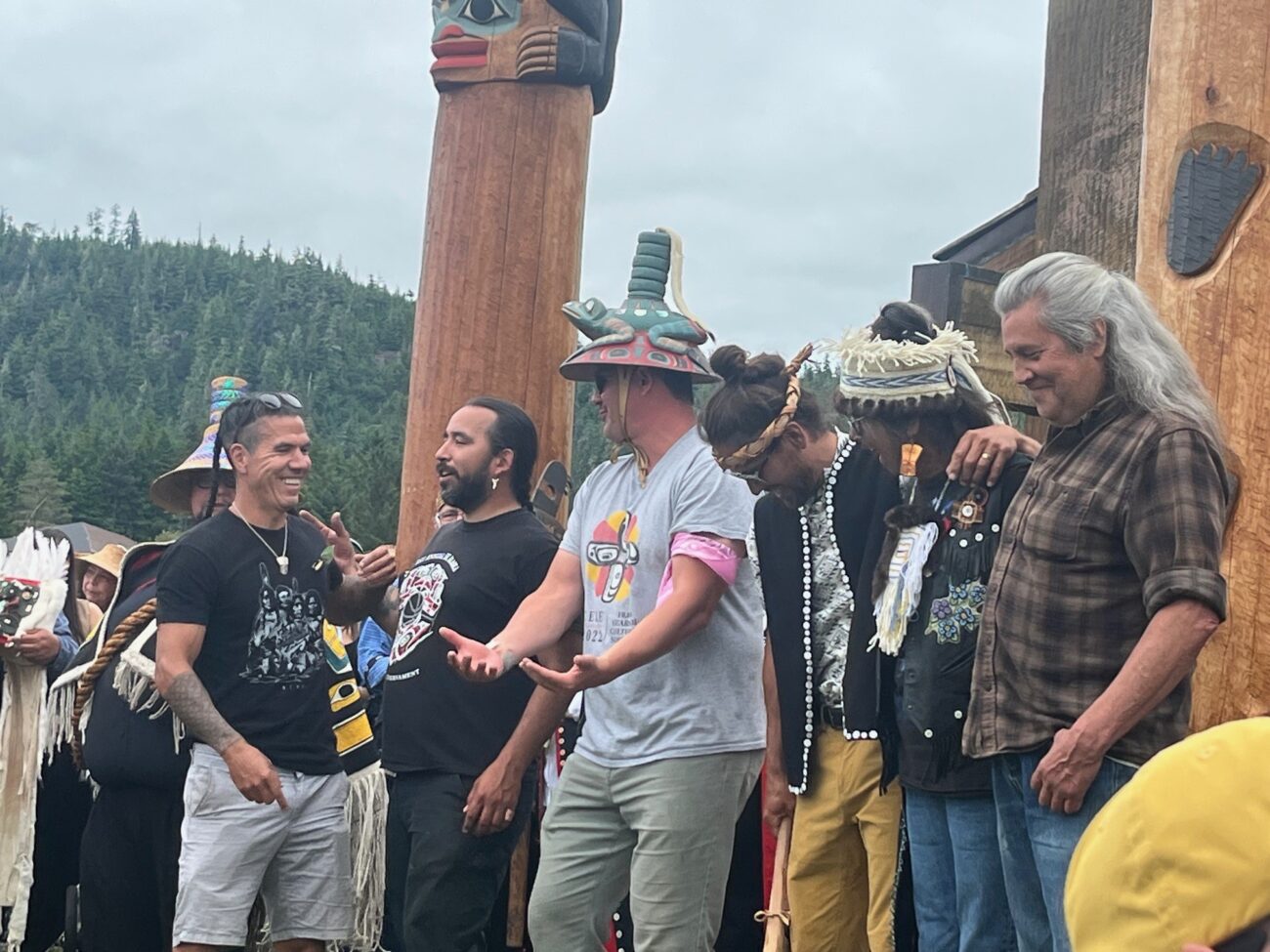
On the last day of the ceremony, the fourth day, people gathered at Chief Shakes House in the old Tlingit village Ḵaachx̱aana.áakʼw. That’s where the Gunakadeit Pole, or Double Killer Whale Crest Hat Pole stands. (The other poles at Chief Shakes is the Bear Up the Mountain and the Underwater Sea Bear.)
U.S. military funds Gunakadeit pole
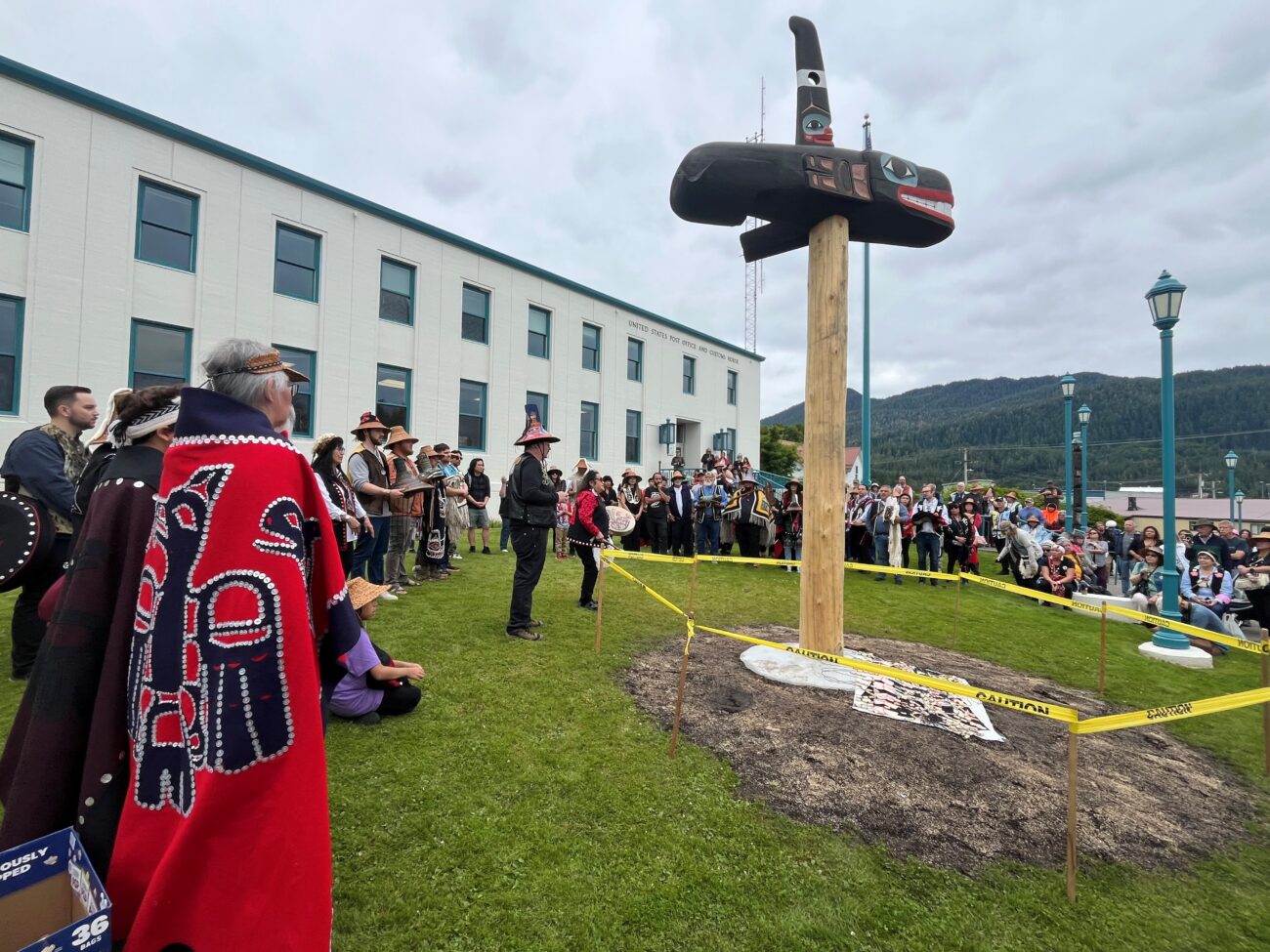
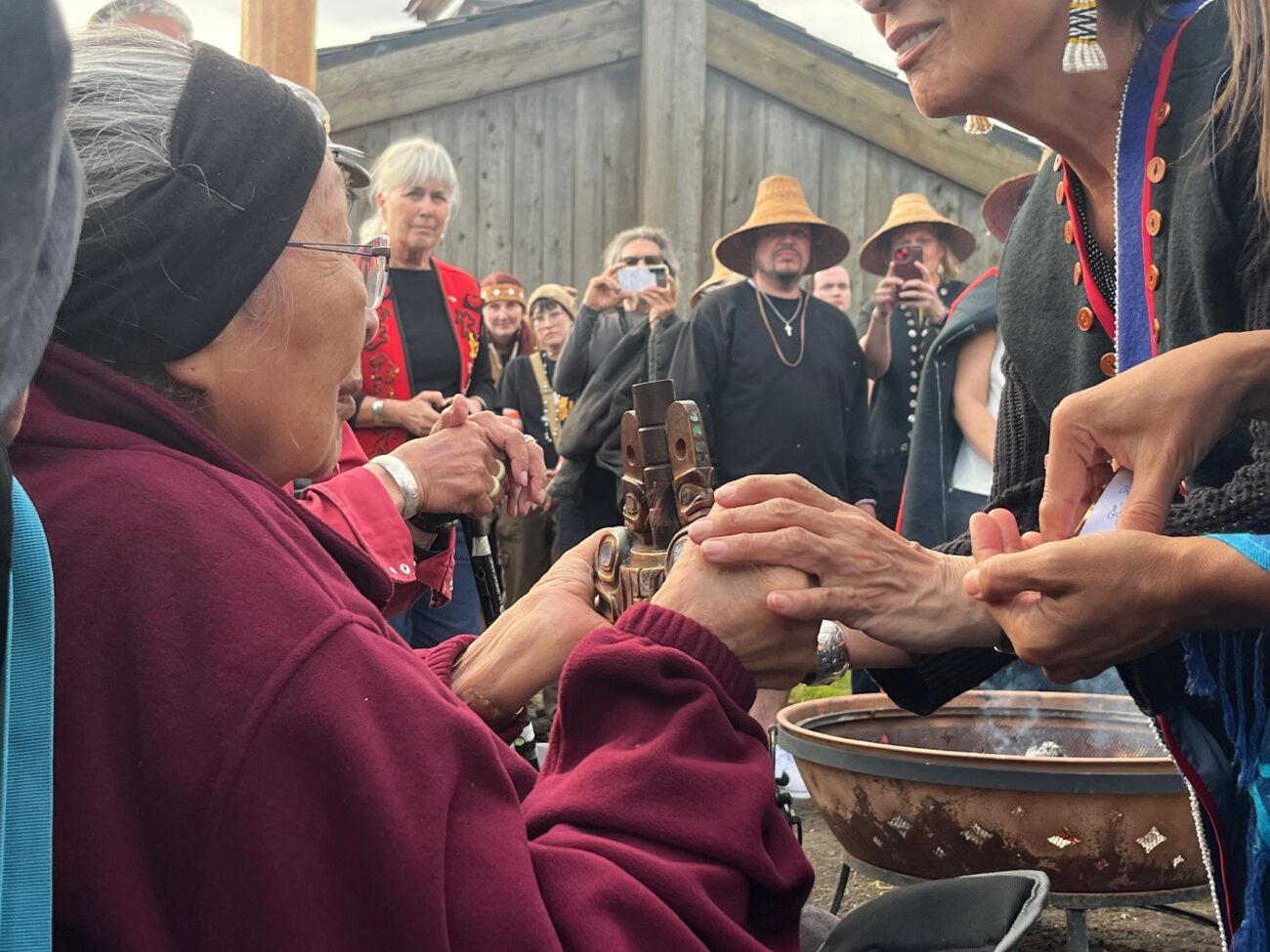
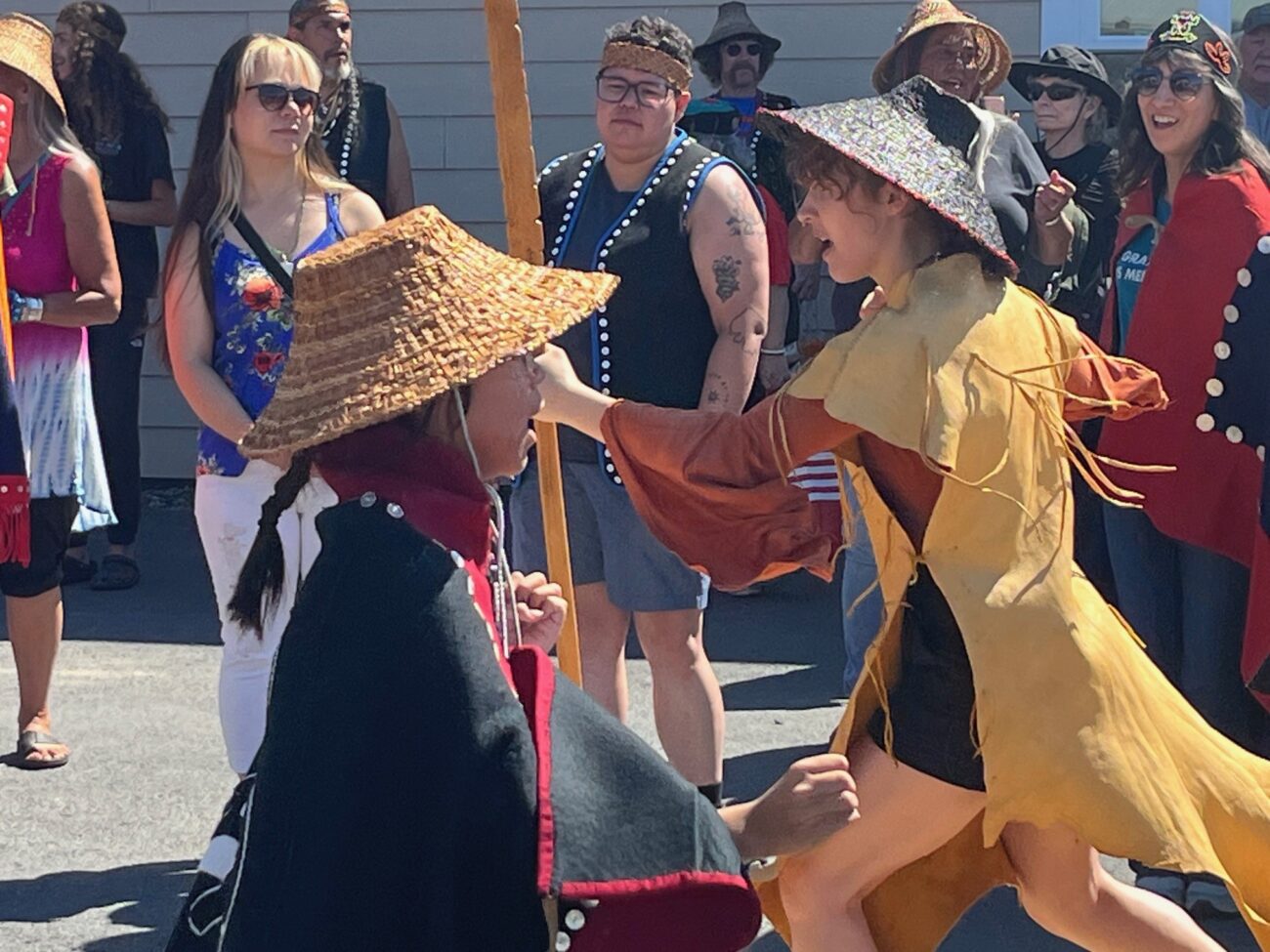
The U.S. military funded this particular totem as an apology for bombarding the village over 150 years ago, which destroyed the Gunakadeit pole. Another pole that was raised was the Killer Whale Grave Marker Pole. It stands at Wrangell’s post office, which was once Fort Wrangel, where the U.S. military was stationed on the island.
After gathering at Chief Shakes, everyone walked back to the carving shed to honor through song and dance those involved – the carvers, ancestors and elders.
Now upright in Wrangell, each totem holds stories of struggle, resilience and unity. The four-day event encompassed paddling by canoe from other communities, a smoke ceremony and the cedar totems.
Wrangell’s tribal government plans to continue carving more poles, with the next one being planned for later this year.










